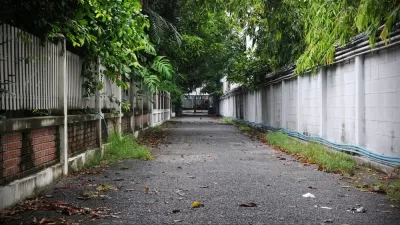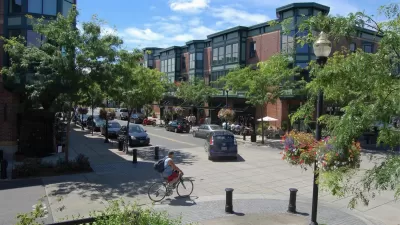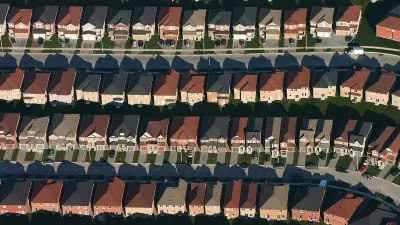The future of Paris has been laid out by ten teams of architects and planners. The ideas are broad, futuristic, and innovative, but few are likely to be realized.
"In more than a year of discussions, there have been some spectacular ideas and drawings by 10 teams of famous architects, drawn by the president's invitation to reimagine Paris as a city integrated with its suburbs and responsible in its environmental footprint.
Antoine Grumbach imagines Paris stretching along the Seine to Le Havre and the sea. Roland Castro, whose team included a sociologist and a philosopher, proposed a 250-acre park circled by skyscrapers in La Courneuve, one of the grimmest of the poor Paris suburbs. Richard Rogers plans rooftop gardens and parks built above railway lines. Yves Lion sees Paris sprouting with fields and forests, with citizens able to cultivate their own vegetable patches, an unfortunate similarity to the necessities of Soviet cities."
The plans of the 10 teams are typically ambitious, but some are calling them too unrealistic. French President Nicolas Sarkozy, who called for the submission of these "grand" plans has said he plans to push for some of the more practical elements explored in these plans.
The main problem, according to officials, is the 22-mile highway that rings the city and separates it from the suburbs. They want to blur the line and allow greater interaction between the city and the suburbs, both economically and environmentally.
FULL STORY: A Paris Plan, Less Grand Than Gritty

Trump Administration Could Effectively End Housing Voucher Program
Federal officials are eyeing major cuts to the Section 8 program that helps millions of low-income households pay rent.

Planetizen Federal Action Tracker
A weekly monitor of how Trump’s orders and actions are impacting planners and planning in America.

Ken Jennings Launches Transit Web Series
The Jeopardy champ wants you to ride public transit.

Washington Legislature Passes Rent Increase Cap
A bill that caps rent increases at 7 percent plus inflation is headed to the governor’s desk.

From Planning to Action: How LA County Is Rethinking Climate Resilience
Chief Sustainability Officer Rita Kampalath outlines the County’s shift from planning to implementation in its climate resilience efforts, emphasizing cross-departmental coordination, updated recovery strategies, and the need for flexible funding.

New Mexico Aging Department Commits to Helping Seniors Age ‘In Place’ and ‘Autonomously’ in New Draft Plan
As New Mexico’s population of seniors continues to grow, the state’s aging department is proposing expanded initiatives to help seniors maintain their autonomy while also supporting family caregivers.
Urban Design for Planners 1: Software Tools
This six-course series explores essential urban design concepts using open source software and equips planners with the tools they need to participate fully in the urban design process.
Planning for Universal Design
Learn the tools for implementing Universal Design in planning regulations.
Heyer Gruel & Associates PA
Ada County Highway District
Institute for Housing and Urban Development Studies (IHS)
City of Grandview
Harvard GSD Executive Education
Toledo-Lucas County Plan Commissions
Salt Lake City
NYU Wagner Graduate School of Public Service





























